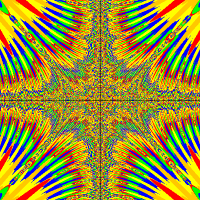import greenfoot.*; // (World, Actor, GreenfootImage, Greenfoot and MouseInfo)
/**
* Write a description of class Ball here.
*
* @author (your name)
* @version (a version number or a date)
*/
public class Ball extends Actor
{
private double h0 = 1;
private double h = h0;
private double tStart;
private double xStart;
private double yStart;
private double g = 9.82;
private double SCALE = 3;
private double v0y;
private double v0x;
private boolean first = true;
private boolean atEdge;
private int Wind = Greenfoot.getRandomNumber(100)+1;
/**
* v0x = v0 * cos(a)
* v0y = v0 * sin(a)
* x= v0 * t * cos(a) = v0x * t
* y = v0 * t * sin(a) - 1/2gt^2 = v0y *t - 1/2gt^2 + h0
*
*/
/**
* Act - do whatever the Ball wants to do. This method is called whenever
* the 'Act' or 'Run' button gets pressed in the environment.
*/
public Ball(int angle, int power)
{
v0y = power * Math.sin(Math.toRadians(angle));
v0x = power * Math.cos(Math.toRadians(angle));
setRotation(-angle);
}
public void act()
{
move();
atEdge();
}
public void move()
{
if(first)
{
first = !first;
tStart = System.currentTimeMillis();
xStart = getX();
yStart = getY();
}
else
{
double t = (System.currentTimeMillis()- tStart)/ 100;
h = h0 + (v0y * t) - (g*t*t)/2;
int xS = (int)(xStart + SCALE * (v0x * t)-Wind);
int yS = (int)(yStart - SCALE * h);
setLocation(xS, yS);
}
}
public boolean atEdge()
{
World ground = getWorld();
if( getX() == ground.getWidth()- 1)
{
ground.removeObject(this);
return true;
}
if( getY() == ground.getHeight()- 1)
{
ground.removeObject(this);
return true;
}
else
{
return false;
}
}
public void addedToWorld(World world)
{
move(130);
}
}



